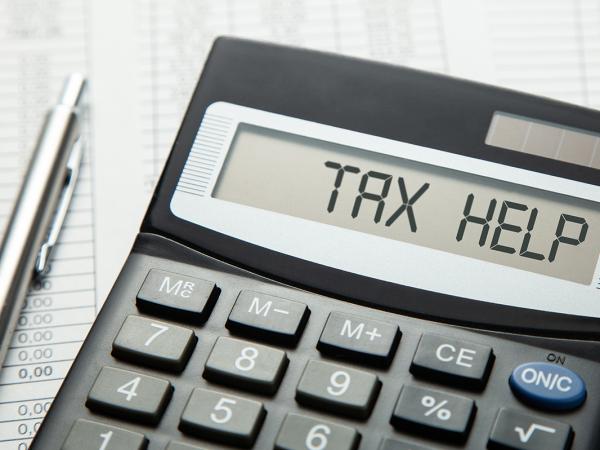Capital gains tax on separation and divorce
The breakdown of a marriage or civil partnership can be a stressful time for all concerned. Below, we cover some key points to consider from a capital gains tax (CGT) perspective.

Content on this page:
Meaning of separation
For CGT purposes, you are able to transfer assets between you and your spouse or civil partner without incurring an immediate CGT liability provided you are not separated from them. The transfer is said to occur at ‘no gain no loss’ and we explain more about how this works below.
You are separated from your spouse or civil partner for CGT purposes if you are separated:
- under a court order, or
- by a formal deed of separation, or
- in such circumstances that the separation is likely to be permanent
If you separated from your spouse or civil partner in circumstances likely to be permanent before the date of the relevant court order or formal deed of separation (as will generally be the case), then the date of separation for CGT purposes will be the earlier date.
If you are not married or in a civil partnership with your partner, then you cannot transfer assets between you on a ‘no gain no loss’ basis.
‘No gain no loss’ treatment
When you transfer an asset to someone else, you are disposing of it (that is, you no longer own the asset). This means you need to calculate whether you have made a capital gain or loss on that disposal. You do this by deducting the CGT ‘base cost’ and any transactional costs from the ‘proceeds’ from the disposal.
In a ‘no gain no loss’ transaction, your ‘proceeds’ are deemed to be such that there is neither a gain nor a loss. This is regardless of the amount actually paid or received in return (if anything).
‘No gain no loss’ treatment can mean that more CGT may be payable overall. When the asset is eventually sold or disposed outside of the marriage/civil partnership, the entire gain will be assessed in the tax year of disposal and only one CGT annual exempt amount will be available to set against this (assuming the asset is held by only one person when sold).
Comparing this to the position where ‘no gain no loss’ treatment does not apply on a transfer – in this case the capital gain to the point of transfer is taxed, with an annual exempt amount potentially available depending on that person’s other capital gains in the year. Any gain from the point of transfer to the date of sale is then treated as an entirely separate gain, which may benefit from another annual exempt amount in the year of sale.
It is also worth bearing in mind that ‘no gain no loss’ treatment may mean that CGT is avoided entirely. An example where this happens would be if the asset is never sold in the lifetime of the person receiving it. The asset would then form part of that person’s estate for inheritance tax purposes.
A final point to note is that where ‘no gain no loss’ treatment applies, it is automatic – it is not possible to ‘opt out’ in order to make use of the annual exempt amount, capital losses or lower tax rates that might be paid by the disposing spouse or civil partner.
Transfers of assets after separation
Up to 5 April 2023
It was previously the case that you could only get ‘no gain no loss’ treatment up to the end of the tax year in which you separate from your spouse or civil partner. For example, if you separated in November 2022, assets transferred between you up to 5 April 2023 would not trigger a CGT charge.
On or after 6 April 2023
However, for transfers of assets taking place on or after 6 April 2023, the rules are different: separating married couples/civil partners continue to have ‘no gain no loss’ CGT treatment applied on transfers of assets to each other for up to three years from the end of the tax year of separation.
However, if the couple divorces (or otherwise they become legally separated by court order) before the end of the three-year period, ‘no gain no loss’ treatment will end at the date the divorce is finalised, unless the transfer of assets takes place as part of a formal divorce (or court separation) agreement. Where assets are transferred as part of a formal divorce (or court separation) agreement, there is no time limit applied to ‘no gain no loss’ treatment of asset transfers.
These rules also include a change to how capital gains are calculated on the sale of the former marital home, where one party moves out following separation and there is an agreement for that person to receive a percentage of the proceeds from the sale. This allows that party to have any main residence relief on their share of the gain unaffected by the fact they did not live in the property between their moving out and the property being sold. If this is likely to affect you, we recommend you take professional advice.
In general terms, if transfers of assets between spouses/civil partners do not qualify for ‘no gain no loss’ treatment, they will be treated as gifts and therefore liable to CGT. However main residence relief may be available if the asset being transferred is the family home (see below).
Sale of the family home
It might be the case that on separation a jointly owned family home needs to be sold.
Your share of the proceeds will remain free of CGT provided the home has been your main home throughout the entire period of ownership. However, if you have moved out of the property before sale then you may need to think about your CGT position.
As discussed at Selling your home, if the property is sold within 9 months of moving out, then main residence relief should be available to cover the gain. If you move out more than 9 months before sale, a proportion of the gain may become liable to tax.
There is a special relief available where, in connection with a permanent separation or divorce or dissolution of civil partnership, the family home is sold to an unconnected third party.
The relief is only relevant if the leaving spouse or civil partner makes the transfer more than 9 months after having left the property, because the leaving spouse or civil partner would be entitled to main residence relief for the final 9 months of ownership of their share in any case. All of the following conditions must apply:
- The property is transferred (sold) to someone other than the remaining spouse or civil partner.
- During the period after having moved out, but before the sale, no other property becomes a main residence of the spouse or civil partner who has moved out.
- During the period after having moved out, the property in question remained the main residence of the remaining spouse or civil partner.
If these conditions are met, the leaving spouse or civil partner will still obtain main residence relief from CGT for the period from his or her moving out to the point of transfer. Of course, if you have purchased another property to live in following moving out of the family home, then if that property is elected as your main residence, you may lose the ability to claim main residence relief under the special rules above – we recommend you take professional advice.
If the property is not sold, but your share is instead transferred to the remaining spouse/civil partner, then the usual no gain no loss rules should apply, provided the transfer takes place in the relevant timeframe.
Getting back together
You or your spouse/civil partner may have lived separately for a period while it was felt that either your relationship had ended or otherwise its future was uncertain.
Transfer of assets on a ‘no gain no loss’ basis
Where there has been no court order or deed of separation, the ability to transfer assets between the two of you on a ‘no gain no loss’ basis would continue until at least three years from the end of the tax year in which the separation was ‘likely to be permanent’.
The above would apply irrespective of whether or not you are physically living separately or apart.
Therefore, if you had separated in circumstances not likely to be permanent (in order words, you took a temporary break) and you then got back together, ’no gain no loss’ treatment would continue to apply for any transfers of assets throughout the period of temporary separation, regardless of the time limit.
If you had considered the separation was likely to be permanent but you nevertheless got back together at some later point, you would need to determine when the circumstances changed such that permanent separation was no longer likely.
Transfers between you in the tax year in which the reconciliation occurs would be at ‘no gain no loss’, even if the transfer happened before the change in circumstances.
Main residence
For main residence relief purposes, you cannot have a different residence or main residence from your spouse or civil partner, so long as you are not separated for CGT purposes. As a result, you can only have one main residence between you.
Therefore, provided you remain unseparated for CGT purposes, a temporary absence from the family home will not affect the main residence relief available for the spouse or civil partner who is temporarily absent from that home.
On the other hand, if you do become separated for CGT purposes then you are not deemed to occupy the same main residence as your spouse or civil partner simply because of your legal relationship with them.
If you later re-occupy the property (for example, because you have got back together) then you may be able to treat the period of absence as a period of deemed occupation of the residence provided it does not exceed three years. A main residence nomination may be required to secure main residence relief for the period of absence from the marital home. You can read more about periods of deemed occupation and main residence nominations at Selling your home.



